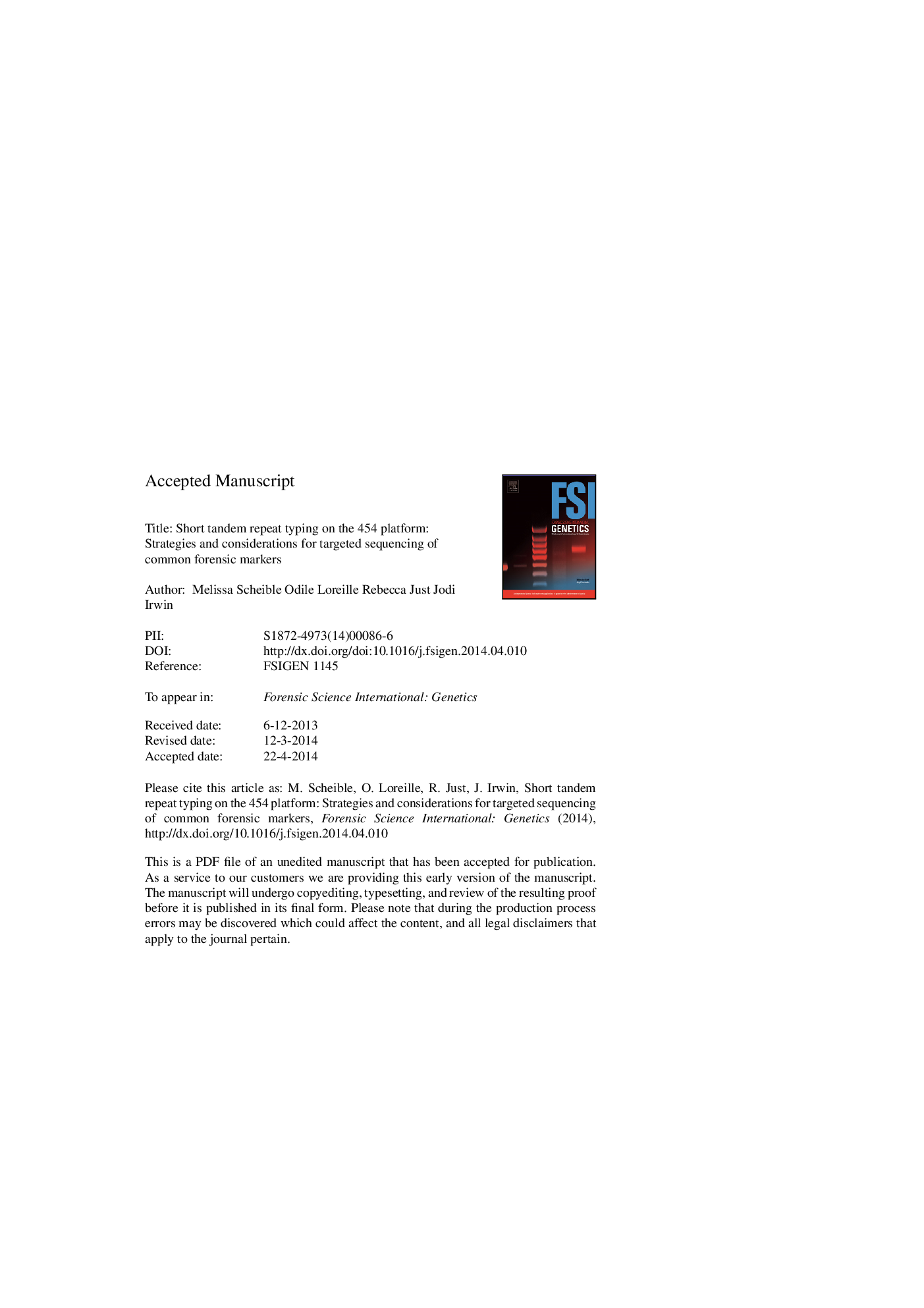| کد مقاله | کد نشریه | سال انتشار | مقاله انگلیسی | نسخه تمام متن |
|---|---|---|---|---|
| 6554035 | 160897 | 2014 | 30 صفحه PDF | دانلود رایگان |
عنوان انگلیسی مقاله ISI
Short tandem repeat typing on the 454 platform: Strategies and considerations for targeted sequencing of common forensic markers
ترجمه فارسی عنوان
تکرار کوتاه مدت تکرار در پلت فرم 454: استراتژی و ملاحظات برای توالی هدفمند از نشانگرهای قانونی مشترک
دانلود مقاله + سفارش ترجمه
دانلود مقاله ISI انگلیسی
رایگان برای ایرانیان
کلمات کلیدی
ترتیب 454، تکرار تاندون کوتاه، توالی نسل بعدی،
موضوعات مرتبط
علوم زیستی و بیوفناوری
بیوشیمی، ژنتیک و زیست شناسی مولکولی
ژنتیک
چکیده انگلیسی
To investigate the feasibility of next generation sequencing technology (NGS) for the multiplex detection and sequence production of short tandem repeats (STRs) from degraded and low DNA quantity samples, standard polymerase chain reaction amplification methods were used to enrich for commonly employed STR markers. Samples were amplified with two multiplexing strategies: a multiplex containing thirteen miniSTR markers and a series of multiplexes containing four miniSTR markers each. Each sample multiplex was barcoded with a sample-specific multiplex identifier for subsequent parallel tagged sequencing on the GS Junior System (454 Life Sciences, a Roche company, Branford, CT). Sequencing results from over fifty DNA extracts representing both pristine samples and low-quality evidentiary specimens reflected known genotypes and were consistent across multiple extracts and/or amplifications of the same sample. Furthermore, the NGS data revealed sequence information not available with standard capillary electrophoresis-based detection alone. For the population samples tested, a total of 152 single nucleotide polymorphisms or insertions/deletions were identified in over 935 recovered alleles, averaging one polymorphism for every six recovered alleles. For three of the loci, the sequence information doubled the number of alleles detected via traditional STR typing by fragment analysis. In addition, twenty-eight of these variants were only seen once within our dataset, highlighting the potential for discrimination among individuals. These additional data are likely to be particularly valuable in missing persons and disaster victim identification cases for which only partial profiles may be recovered and/or only distant kin are available as references. And, considering the opportunity to target only small amplicons with NGS, this type of STR typing will allow for greater information recovery from challenging casework samples. While our results highlight the potential of new technologies for recovering discriminatory genetic information from evidentiary specimens, our data also reveal the complexities of NGS-based STR typing, both in terms of the laboratory assays themselves as well as the downstream data processing and analysis.
ناشر
Database: Elsevier - ScienceDirect (ساینس دایرکت)
Journal: Forensic Science International: Genetics - Volume 12, September 2014, Pages 107-119
Journal: Forensic Science International: Genetics - Volume 12, September 2014, Pages 107-119
نویسندگان
Melissa Scheible, Odile Loreille, Rebecca Just, Jodi Irwin,
